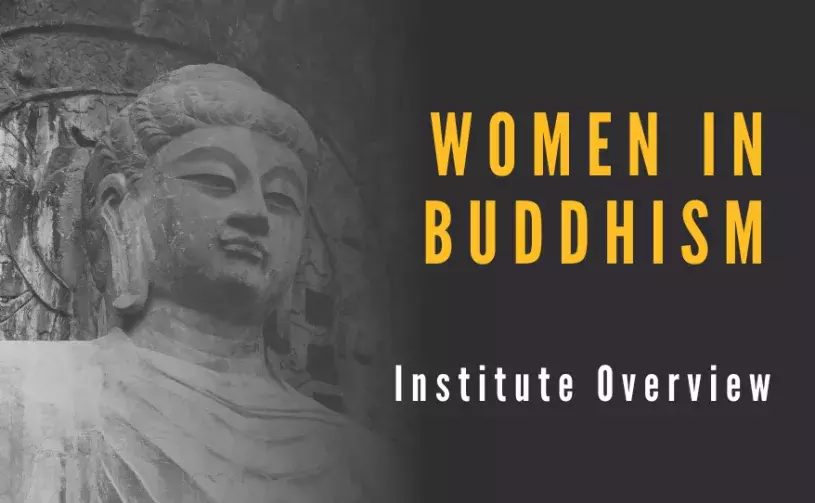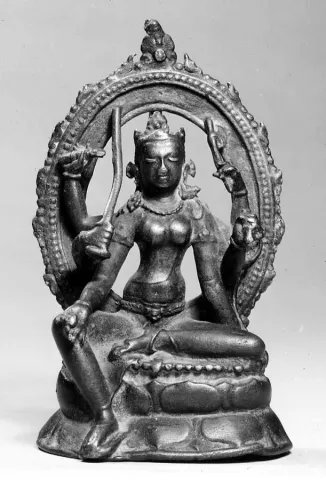Error message

Institute Overview

In preparation for the Institute, participants will be asked to read three Core Texts to ensure a shared knowledge base, and to explore the Institute Bibliography. Participants will also be asked to provide the Co-Directors with short statements about their intended curriculum development and/or research projects.
Week One: Religious and Spiritual Prospects of Women in Buddhist Asia
The Institute will open with a program overview by the Co-Directors, a discussion of methodologies, and a presentation on the origin and core practices of Buddhism by Peter Hershock. Tuesday’s session with Pascale Engelmajer (Carroll University) will focus on the historical development of Buddhism in South Asia, with a focus on the evolving roles of women as revealed in Pali canonical texts and by archeological evidence. Wendi Adamek will chart the movement of Buddhism into China and the religious lives of Chinese Buddhist women on Wednesday morning, and Adamek and Hershock will jointly conduct two sessions on Thursday: a close reading of Indian Mahāyāna Buddhist texts, exploring affirmations of and tensions surrounding women’s capacities for Buddhist liberation; and a dialogic workshop on a relational approach to understanding Buddhist women’s agency. The week concludes (as do the 2nd and 3rd weeks) with a participant-facilitated panel discussion of the week’s presenters.
Week Two: Representing Women: Art, Literature and Film
The second week of the program begins with presentations by Melody Rod-ari (Loyola Marymount University), Wendi Adamek (University of Calgary), and John Szostak (University of Hawai‘i). Each session will feature detailed looks at women’s roles as subjects, sponsors and creators of Buddhist art, and particular attention will be given to the social, economic and political contexts and aims of Buddhism revealed in visual arts, architecture, and ritual. Paola Zamperini (Northwestern University) will then join the program on Wednesday to explore how Chinese literary practices and imagination were transformed by Buddhism, as well as both commonalities and dissimilarities between men and women in the Chinese practice of Buddhism. Finally, Keller Kimbrough (University of Colorado, Boulder) will explore how Buddhism shaped Japanese literary imagination and aesthetic ideals, focusing on the roles of playwrights, poets and women in expressing the meaning of the Buddhist path in premodern Japan.
Week Three: Roles of Women in the Institutional Spaces of Buddhist Asia
This week begins with meetings of participants and the Institute Co-Directors to discuss and share feedback on final projects. On Tuesday, Reiko Ohnuma (Dartmouth) will investigate the “mothering” roles of women in the family as a Buddhist social institution. Jessica Starling’s (Lewis and Clark) Thursday morning presentation will bring into focus the profound interdependence of religion and politics, and the distinctive gender dynamics, of Japanese Buddhist institutions. She will be followed that afternoon by Lisa Battaglia (Samford University) who will address the institutional dimensions of Buddhist women in Theravāda Southeast Asia, including the disappearance of the nuns order.
Week Four: Women and Buddhist Modernity
The final week turns to the modern era with presentations focused on the life histories of modern Buddhist women. Lisa Battaglia returns with a Monday presentation on women-led Buddhist lay movements in Thailand that link meditation with mundane attainments. Sarah Jacoby (Northwestern) will reveal the complex place of women in Tibetan Vajrayana through the life of a visionary 19th and early 20th century Tibetan woman, Sera Khandro, while Jin Y. Park (American University) will similarly explore Korean Buddhism’s engagement with modernity through the remarkable religious and literary life of Kim Iryŏp. The program concludes with a discussion of key concepts and issues concerning women, Buddhism and modernity, followed by participant project presentations on Thursday afternoon and Friday morning.
Institute Overview

In preparation for the Institute, participants will be asked to read three Core Texts to ensure a shared knowledge base, and to explore the Institute Bibliography. Participants will also be asked to provide the Co-Directors with short statements about their intended curriculum development and/or research projects.
Week One: Religious and Spiritual Prospects of Women in Buddhist Asia
The Institute will open with a program overview by the Co-Directors, a discussion of methodologies, and a presentation on the origin and core practices of Buddhism by Peter Hershock. Tuesday’s session with Pascale Engelmajer (Carroll University) will focus on the historical development of Buddhism in South Asia, with a focus on the evolving roles of women as revealed in Pali canonical texts and by archeological evidence. Wendi Adamek will chart the movement of Buddhism into China and the religious lives of Chinese Buddhist women on Wednesday morning, and Adamek and Hershock will jointly conduct two sessions on Thursday: a close reading of Indian Mahāyāna Buddhist texts, exploring affirmations of and tensions surrounding women’s capacities for Buddhist liberation; and a dialogic workshop on a relational approach to understanding Buddhist women’s agency. The week concludes (as do the 2nd and 3rd weeks) with a participant-facilitated panel discussion of the week’s presenters.
Week Two: Representing Women: Art, Literature and Film
The second week of the program begins with presentations by Melody Rod-ari (Loyola Marymount University), Wendi Adamek (University of Calgary), and John Szostak (University of Hawai‘i). Each session will feature detailed looks at women’s roles as subjects, sponsors and creators of Buddhist art, and particular attention will be given to the social, economic and political contexts and aims of Buddhism revealed in visual arts, architecture, and ritual. Paola Zamperini (Northwestern University) will then join the program on Wednesday to explore how Chinese literary practices and imagination were transformed by Buddhism, as well as both commonalities and dissimilarities between men and women in the Chinese practice of Buddhism. Finally, Keller Kimbrough (University of Colorado, Boulder) will explore how Buddhism shaped Japanese literary imagination and aesthetic ideals, focusing on the roles of playwrights, poets and women in expressing the meaning of the Buddhist path in premodern Japan.
Week Three: Roles of Women in the Institutional Spaces of Buddhist Asia
This week begins with meetings of participants and the Institute Co-Directors to discuss and share feedback on final projects. On Tuesday, Reiko Ohnuma (Dartmouth) will investigate the “mothering” roles of women in the family as a Buddhist social institution. Jessica Starling’s (Lewis and Clark) Thursday morning presentation will bring into focus the profound interdependence of religion and politics, and the distinctive gender dynamics, of Japanese Buddhist institutions. She will be followed that afternoon by Lisa Battaglia (Samford University) who will address the institutional dimensions of Buddhist women in Theravāda Southeast Asia, including the disappearance of the nuns order.
Week Four: Women and Buddhist Modernity
The final week turns to the modern era with presentations focused on the life histories of modern Buddhist women. Lisa Battaglia returns with a Monday presentation on women-led Buddhist lay movements in Thailand that link meditation with mundane attainments. Sarah Jacoby (Northwestern) will reveal the complex place of women in Tibetan Vajrayana through the life of a visionary 19th and early 20th century Tibetan woman, Sera Khandro, while Jin Y. Park (American University) will similarly explore Korean Buddhism’s engagement with modernity through the remarkable religious and literary life of Kim Iryŏp. The program concludes with a discussion of key concepts and issues concerning women, Buddhism and modernity, followed by participant project presentations on Thursday afternoon and Friday morning.

